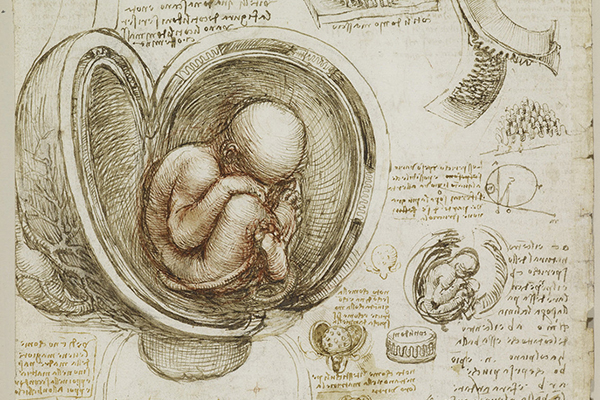Intelligenza grafica
DOI:
https://doi.org/10.15168/xy.v1i2.30Abstract
In questo articolo viene presentata e discussa l’ipotesi di una particolare forma di intelligenza, nel contesto delle teorie sulle intelligenze multiple: la “intelligenza grafica”, intesa come la capacità di utilizzare le abilità grafiche e più in generale la capacità di integrare l’uso di occhio, mente e mano, per risolvere problemi e creare prodotti efficaci finalizzati all’acquisizione di nuova conoscenza. Le più recenti ricerche provenienti dalle scienze cognitive suggeriscono, infatti, l’esistenza di importanti relazioni tra rappresentazione grafica e sviluppo cognitivo che potrebbero sostenere l’idea di un’intelligenza grafica autonoma dalle altre forme di intelligenza che sinora sono state considerate capaci di descrivere e contenere questo particolare tipo di competenza intellettiva umana. L’intelligenza grafica andrebbe così a confrontarsi in maniera paritetica con le più conosciute intelligenze linguistiche e logico–matematiche su cui la scuola oggi tende a focalizzarsi e a completare e arricchire le già indagate intelligenze visive e spaziali. Pensare alle competenze grafiche come a una forma di intelligenza obbliga a rivolgere l’attenzione non solo sul prodotto grafico ma sul “processo cognitivo” che ha portato all’elaborazione di quel prodotto. Un cambiamento di prospettiva, questo, capace di suggerire nuovi approcci alla didattica a tutti i livelli e in tutti i campi dell’istruzione.
Riferimenti bibliografici
ARNHEIM, R., 1969. Visual thinking. Berkeley: University of California Press, pp. 348.
BALDASSO, R., 2006. The Role of Visual Representation in the Scientific Revolution: A Historiographic Inquiry. Centaurus. 48, 2006, pp. 69–88.
BREDEKAMP, H., 2001. Gazing hands and blind spots: Galileo as draftsman. Science in Context. 14 (1), 2001, pp. 153–192.
BUTTERFIELD, H., 1954. Renaissance Art and Modern Science. University Review. 1, 1954, pp. 25–37.
CERVELLINI, F., 2016. Il disegno come luogo del progetto. Ariccia: Aracne editrice, pp. 266.
CROSS, A., 1986. Design intelligence: the use of codes and language systems in design. Design Studies. 7 (1), 1986, pp. 14–19.
EDGERTON, S.Y. Jr., 1984. Galileo, Florentine “disegno”, and the “strange spottednesse” of the moon. Art Journal. 44 (3), 1984, pp. 225–232.
FATTA, F., 2016. Science and art between time and place: six points of view. XY. 1, 2016, pp. 44–56.
FERGUSON, E.S., 1977. The mind’s eye: Nonverbal thought in technology. Science. 197 (4306), 1977, pp. 827–836 (doi: 10.1126/science.197.4306.827).
GARDNER, H., 2015. Formae mentis. Saggio sulla pluralità dell’intelligenza. Milano: Feltrinelli, pp. 591 (ed. or. 1983, Frames of mind. The theory of multiple intelligence. New York: Basic Books, pp. 440).
GIANDEBIAGGI, P., 2016. Drawing: creative expression. XY. 1, 2016, pp. 98–108.
GOLDSCHMIDT, G., 1991. The dialectics of sketching. Creativity research journal. 4 (2), 1991, pp. 123–143.
JAMNITZER, W., 1568. Perspectiva corporum regularium. Nuremberg. Citato in BREDEKAMP, H., 2001, op. cit.
LASEAU, P., 2001. Graphic thinking for architects and designers. London: Wiley, pp. 246.
LATOUR, B., 1990. Drawing things together. In LYNCHM, M., WOOLGAR, S. (Eds), Representation in scientific practice. Cambridge, MA: MIT press, pp. 19–68.
MASSIRONI, M., 1982. Vedere con il disegno. Padova: Franco Muzzio Editore, pp. 189.
NELMS, H., 1964. Thinking with a Pencil. London: Bernes & Noble, pp. 346.
PALLASMAA, J., 2009. The thinking hand: Existential and embodied wisdom in architecture. Chichester: Wiley, pp. 160.
PIAGET, J., INHELDER, B., 1948. La représentation de l’espace chez l’enfant. Paris: Presses Universitaires de France, pp. 581.
ROBERTSON, I., 2003. Opening the Mind’s Eye: How Images and Language Teach Us How To See. London: St. Martin’s Press, pp. 288.
SCHON, D., 1983. The Reflexive Practitioner. New York: Basic Books, pp. 384.
SMITH, I.M., 1964. Spatial ability: Its educational and social significance. London: University of London Press, pp. 408.
TREIB, M. (Ed.), 2012. Drawing/thinking: confronting an electronic age. London: Routledge.
VAN SOMMERS, P., 1984. Drawing and cognition: Descriptive and experimental studies of graphic production processes. New York: Cambridge University Press, pp. 284.
VERSTIJNEN, I.M., HENNESSEY, J.M., 1998. Sketching and creative discovery. Design studies. 19 (4), 1998, pp. 519–546.
VIVIANI, V., 1890–1909. Racconto istorico della vita del Sig. Galileo Galilei. In FAVARO, A. (Ed.), Opere di Galileo.
Firenze: Barbera, vol. 19, pp. 597–646. Citato in BREDEKAMP, H., 2001, op. cit.


